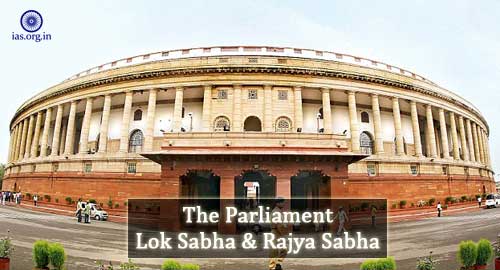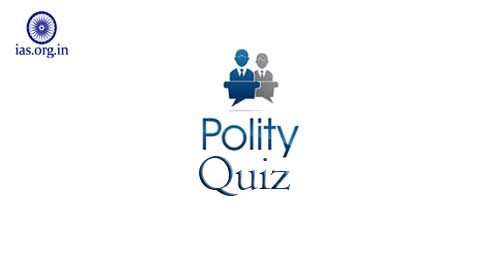On elaborating on the Constitution of Parliament Art .79[Chapter 11] of the Constitution states that “there shall be a Parliament for the Union which shall consists of the President and two Houses to be known as Council of States [the Rajya Sabha] and the House of the People[the Lok Sabha]”.
The Rajya Sabha (Council of States)
Art.80 of the Constitution of India, dealing with the composition of the Rajya Sabha, states that the Rajya Sabha “shall not consist of more than two hundred and thirty-eight representatives of the States [added by the section 3 of the Seventh Amendment of the Constitutoin Act, 1956]and of the Union Territories.
At present the Rajya Sabha comprises of 245 members, out of which the President nominates 12 members [Clause three of the Art. 80]. According to the sub- clause[a] of clause[1] Art.80 the President nominates the persons having special knowledge or practical experience in the field of Literature, science, art and social service.
However, the elected members of the State Legislative Assemblies elect the rest of the members by using the method of the system of proportional representation.
One –third members of the Rajya Sabha, a permanent house, retire every second year. The qualification for being a member of the Rajya Sabha is:
- The person must have attained the age of thirty years, and
- S/he must not hold any office of profit.
Must Read: 10 Polity Questions – UPSC Previous Paper Explained
Functions and Powers of Rajya Sabha
While Rajya Sabha, in the case of ordinary Bills, enjoys co- equal powers with Lok Sabha; in the matter of Money Bills the Lok Sabha has got the upper hand. Art. 109 of the Constitution, in respect of Money Bills, elaborates that if the Lok Sabha does not accept any of the recommendations of the Rajya Sabha, the Money Bill ‘shall be deemed to have been passed by both Houses in the form in which it was passed by the Lok Sabha’.
In the matter of executive powers, Rajya Sabha can criticize the government, but it can not make or unmake the governments since the executive is responsible to the Lok Sabha alone.
However, Rajya Sabha, as the representative of the federal character of the Constitution, has got two special powers:
- Art. 249 states that by a resolution supported by not less than two- thirds of its members, present and voting, The Rajya Sabha may empower the parliament to legislate on the matter of State list in the national interest.
- Art. 312 states that the Rajya Sabha has got the power to decide, by a resolution that must be supported by a two – third majority, the question of setting up of All India Services.
In the matters of Constitutional amendments, electoral powers, impeachment of the President and approval of emergency proclamations, the Rajya Sabha enjoys co- equal powers with the Lok Sabha.
Don’t Miss: The Governor : Appointment, Functions and Powers
Lok Sabha (The House of the People)
Art. 81, that deals with the composition of the House of the People, states that the Lok Sabha consists of directly elected people from territorial constituencies and its maximum strength can not be more than 552. At present the Lok Sabha comprises of 545 members.
Art. 84, that deals with the qualification for membership of parliament, states that any citizen of India, who has completed the age of 25 years and does not hold any office of profit, may contest for Lok Sabha election.
According to the Art. 85 of the Constitution, the two Houses of Parliament must meet at least twice a year. The ordinary term of the House of the people is five years that can be extended during emergency[Art. 83].
Elaborating on the allocation of seats to the States, Art. 82 says,”Upon the completion of each census, the allocation of seats in the House of the People to the States and the division of each State into territorial constituencies shall be readjusted by such authority and in such manner as Parliament may by law determine.
The House of the People is presided over by the Speaker, who is elected by the members of the House.
Also Read: Indian Polity and Constitution
Powers of the Lok Sabha
Legislative Powers: According to Art. 107, that deals with the Legislative Procedures[read powers], a Money Bill can be introduced in the Lok Sabha which has upper hand in its passage. However, in case of ordinary Bills both the Houses have got equal powers.
Executive Powers: The executive is solely responsible to the Lok Sabha. The confidence of the Parliament denotes the confidence of the Lok Sabha and the responsibility of the executive implies responsibility to the Lok Sabha.
Financial Powers: The purse of the nation is controlled by the Lok Sabha. Needs and aspirations of public opinion are represented by the Lok Sabha so it can be ascertained that the House of the People is the real centre of power.
Must Read: Aadhar Bill Presented in the Lok Sabha




 The National Human Rights Commission is a statutory body in India which came into existence through the Protection of
The National Human Rights Commission is a statutory body in India which came into existence through the Protection of 

